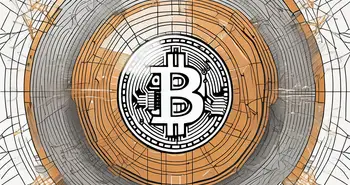Why Is Gold So Valuable?

I have always been fascinated by the allure of gold. Throughout history, this precious metal has captivated civilizations and sparked countless adventures in search of its glittering beauty. But what exactly gives gold its immense value? Join me on a journey as we uncover the secrets behind gold's allure and explore its significance in our modern world.
Understanding the Inherent Value of Gold
Gold's value is not merely a product of human perception or societal norms; it stems from the metal's intrinsic qualities. First and foremost, gold is scarce. The rarity of gold contributes to its desirability and drives up its price. To put things into perspective, all the gold ever mined in human history could fit into just three Olympic-sized swimming pools!
But what makes gold so scarce? The answer lies in its geological formation. Gold is primarily found deep within the Earth's crust, and the process of its creation is a fascinating one. It is believed that gold is formed during supernova explosions, where massive stars explode and release heavy elements into space. Over billions of years, these elements eventually find their way into the Earth's crust, where gold deposits are formed. However, the concentration of gold in these deposits is incredibly low, making it a challenging and costly endeavor to extract.
Additionally, gold possesses unique physical properties that further enhance its value. Unlike other metals, gold is resistant to corrosion and tarnishing. This durability ensures that gold remains beautiful and intact over time, making it an excellent store of value. Imagine owning a piece of jewelry that can be passed down through generations, maintaining its luster and elegance throughout the years.
Furthermore, gold is incredibly malleable and ductile, meaning it can be easily shaped into intricate designs or drawn into thin wires. This versatility has made gold indispensable in the realm of jewelry and decorative arts. From ancient civilizations to modern times, gold has been used to create stunning pieces of art, symbolizing wealth, power, and beauty. The craftsmanship involved in working with gold is a testament to human creativity and skill.
But gold's value extends beyond its physical properties and historical significance. It has also played a crucial role in the global economy. Throughout history, gold has been used as a medium of exchange and a store of wealth. Its universal acceptance and stability have made it a reliable form of currency, especially during times of economic uncertainty. Central banks and investors alike hold gold as a hedge against inflation and currency fluctuations.
Moreover, gold has practical applications in various industries. Its excellent conductivity makes it an essential component in electronics, particularly in the production of computer chips and other electronic devices. Without gold, our modern world of technology would not be possible.
In conclusion, the inherent value of gold goes far beyond its scarcity and physical properties. Its geological formation, durability, versatility, historical significance, economic role, and practical applications all contribute to its enduring allure. As we continue to marvel at the beauty and value of gold, let us appreciate the fascinating journey this precious metal has taken throughout history and its continued importance in our lives.
The Historical Significance of Gold
Gold's allure extends far beyond its physical properties. Throughout ancient civilizations, gold was revered as a symbol of wealth, power, and divine connection. From the opulence of King Tutankhamun's tomb to the legendary city of El Dorado, gold has ignited the imaginations of countless explorers and adventurers.
One of the most fascinating aspects of gold is its role in ancient rituals and religious practices. In many cultures, gold was believed to possess mystical properties and was used in ceremonies to honor gods and goddesses. The Egyptians, for example, used gold extensively in their religious rituals, adorning their temples and statues with this precious metal. The Incas, on the other hand, considered gold to be the sweat of the sun and used it to create magnificent ceremonial objects.
Moreover, gold played a pivotal role in shaping the monetary systems of the past. The gold standard, which emerged in the 19th century, tied the value of currencies to the price of gold. This system provided stability and trust in the global economy, ensuring that money had tangible value backed by the precious metal.
During the California Gold Rush in the mid-19th century, gold became the driving force behind the settlement and development of the American West. Thousands of people flocked to California in search of fortune, creating bustling mining towns and leaving a lasting impact on the region's history. The discovery of gold not only transformed the landscape but also fueled technological advancements in mining and transportation.
Furthermore, gold has been a symbol of status and prestige throughout history. In ancient Rome, gold was worn by emperors and high-ranking officials as a sign of their power and authority. The Aztecs, too, valued gold as a symbol of wealth and used it to create intricate jewelry and ceremonial objects. Even today, gold continues to be associated with luxury and elegance, adorning the jewelry of the rich and famous.
Beyond its cultural and economic significance, gold has also played a vital role in scientific advancements. Gold nanoparticles, for instance, have been used in various medical applications, including cancer treatment and drug delivery. The unique properties of gold, such as its high conductivity and resistance to corrosion, have made it an invaluable material in electronics and telecommunications.
In conclusion, the historical significance of gold is undeniable. From its role in ancient rituals and religious practices to its impact on global economies, gold has left an indelible mark on human civilization. Its allure and value have stood the test of time, making it a precious and sought-after metal throughout history and into the modern age.
Gold in Modern Economy
While gold no longer holds the same prominent position in monetary systems, its significance in the modern economy remains undeniable. Today, gold serves as both a tangible investment and an integral component in various industries.
As an investment, gold acts as a hedge against inflation and economic volatility. During times of uncertainty, investors often seek the safety and stability of gold, driving up its price. This precious metal has a long history of being a store of value, dating back to ancient civilizations. In fact, gold has been used as a form of currency for thousands of years, and its allure as a symbol of wealth and power has not diminished over time.
Furthermore, owning physical gold provides a sense of security, knowing that you possess a tangible asset that holds value irrespective of market fluctuations. Unlike paper currencies, which can be easily devalued or manipulated by governments, gold is a tangible and finite resource. Its scarcity adds to its value and makes it a sought-after asset by investors around the world.
Beyond investment, gold plays a critical role in technology and industry. Its excellent electrical conductivity and resistance to corrosion make it an essential component in electronic devices, such as smartphones and computers. The thin layers of gold used in circuit boards and connectors ensure reliable and efficient transmission of electrical signals. Without gold, our modern gadgets would not be able to function at their current level of sophistication.
Additionally, gold is used in various industries, including aerospace, medicine, and even gourmet cuisine! In the aerospace industry, gold is utilized in the coating of spacecraft components to protect them from the harsh conditions of space. In medicine, gold nanoparticles are being researched for their potential applications in targeted drug delivery and cancer treatment. And in the world of gastronomy, gold leaf is used to add a touch of luxury and elegance to desserts and beverages. Who would have thought that gold could enhance the flavors of our most indulgent dishes?
In conclusion, while gold may no longer be the primary form of currency, its value and significance in the modern economy cannot be underestimated. Whether as a safe haven investment or as a crucial component in various industries, gold continues to shine bright in our ever-evolving world.
The Future of Gold
So, what does the future hold for this precious metal? Predicting the precise value of gold is a challenging task, as it is influenced by a myriad of factors, including economic trends, geopolitical events, and even consumer sentiment. However, one thing is certain: gold will continue to captivate our fascination and retain its allure.
Gold has always held a special place in human history. From ancient civilizations to modern societies, this precious metal has been treasured for its beauty and rarity. Its unique properties, such as its resistance to corrosion and malleability, have made it a sought-after material for jewelry, currency, and various industrial applications.
But beyond its aesthetic and functional appeal, gold has also been a symbol of wealth and power. Throughout history, it has been used as a store of value and a hedge against economic uncertainty. In times of financial turmoil, investors often turn to gold as a safe haven, seeking stability and protection for their assets.
As for gold mining, the industry faces significant challenges in ensuring sustainability and responsible extraction practices. With growing awareness of environmental impact and ethical concerns, it is crucial for gold miners to prioritize responsible mining and reclamation efforts, minimizing the ecological footprint associated with extracting this precious resource.
Efforts are being made to develop innovative technologies and techniques that reduce the environmental impact of gold mining. From using renewable energy sources to implementing water recycling systems, mining companies are exploring ways to minimize their carbon footprint and conserve natural resources.
Furthermore, there is a growing demand for transparency and accountability in the gold supply chain. Consumers are increasingly conscious of the social and environmental impact of the products they purchase, including gold jewelry. This has led to the rise of initiatives such as fair trade gold and responsible sourcing programs, which aim to ensure that gold is extracted and processed in a sustainable and ethical manner.
As an expert in the field, I advise individuals to approach gold as a long-term investment strategy. Take the time to understand the market dynamics and consider diversifying your portfolio with a mix of physical gold, gold ETFs, and gold mining stocks. Remember, the key to successful investing lies in informed decision-making and a long-term perspective.
It is also worth noting that gold has a unique role in the global economy. Central banks around the world hold significant gold reserves as part of their foreign exchange reserves. This highlights the enduring value and importance of gold as a trusted asset.
In conclusion, while the future value of gold may be uncertain, its timeless appeal and historical significance make it a fascinating subject to explore. From its cultural and symbolic value to its role in investment portfolios, gold continues to capture our imagination and hold a special place in our society.
FAQ – Frequently Asked Questions
Why is gold so valuable?
Gold's value stems from its inherent scarcity and unique physical properties, making it a desirable asset throughout history and in the modern world.
What role did gold play in ancient civilizations?
Gold held immense cultural and symbolic significance in ancient civilizations. It was revered as a symbol of wealth, power, and divinity.
Can gold be a good investment?
Yes, gold can serve as a valuable investment. It acts as a hedge against inflation and economic volatility, providing stability and diversification to investment portfolios.
What is the future of gold?
The future of gold remains uncertain, as it is influenced by various factors. However, gold will likely continue to captivate our fascination and retain its allure as a precious and sought-after metal.
What should individuals consider when investing in gold?
When investing in gold, individuals should consider their long-term financial goals, understand market dynamics, and diversify their portfolio to mitigate risk.
In conclusion, the value of gold transcends time and continues to fascinate us. Whether it's appreciating its historical significance, exploring its role in the modern economy, or considering its future prospects, gold remains an intriguing and precious metal. As an expert in the field, I encourage you to delve deeper into this glittering world and uncover the mysteries that lie within. Who knows, you might just uncover a hidden treasure along the way!
As you reflect on the timeless value of gold and its multifaceted role in history and the modern economy, consider expanding your investment horizons with Morpher. Embrace the future of trading by leveraging the power of blockchain technology on a platform that offers zero fees, infinite liquidity, and the freedom to trade a wide array of assets, including gold. With Morpher, you can start with fractional investing, benefit from short selling without interest fees, and enjoy up to 10x leverage to amplify your trades. Experience a unique trading journey with the safety and control of a self-hosted Morpher Wallet. Ready to transform your investing experience? Sign Up and Get Your Free Sign Up Bonus today and join the revolution with Morpher.

Disclaimer: All investments involve risk, and the past performance of a security, industry, sector, market, financial product, trading strategy, or individual’s trading does not guarantee future results or returns. Investors are fully responsible for any investment decisions they make. Such decisions should be based solely on an evaluation of their financial circumstances, investment objectives, risk tolerance, and liquidity needs. This post does not constitute investment advice.

Painless trading for everyone
Hundreds of markets all in one place - Apple, Bitcoin, Gold, Watches, NFTs, Sneakers and so much more.

Painless trading for everyone
Hundreds of markets all in one place - Apple, Bitcoin, Gold, Watches, NFTs, Sneakers and so much more.









